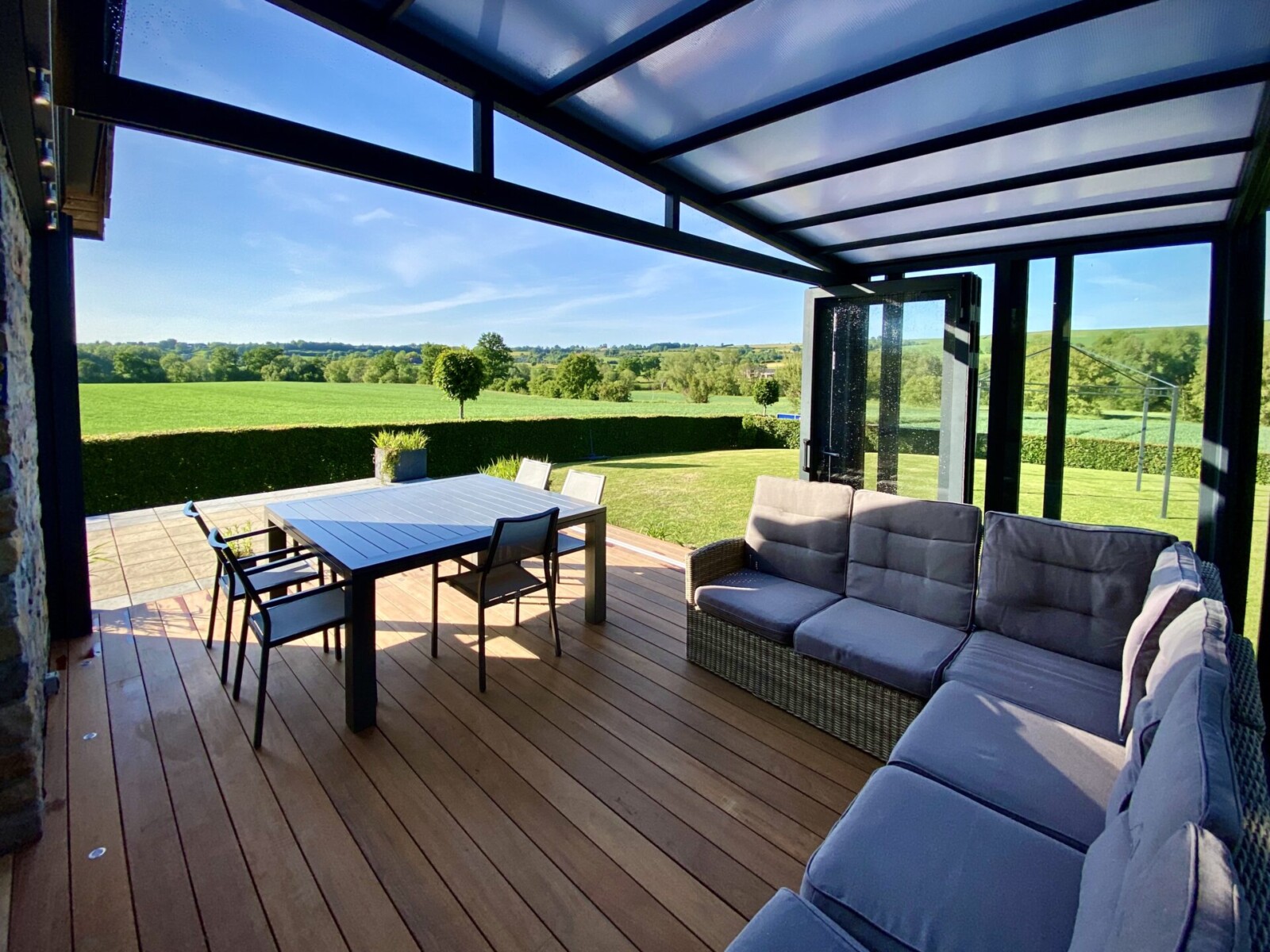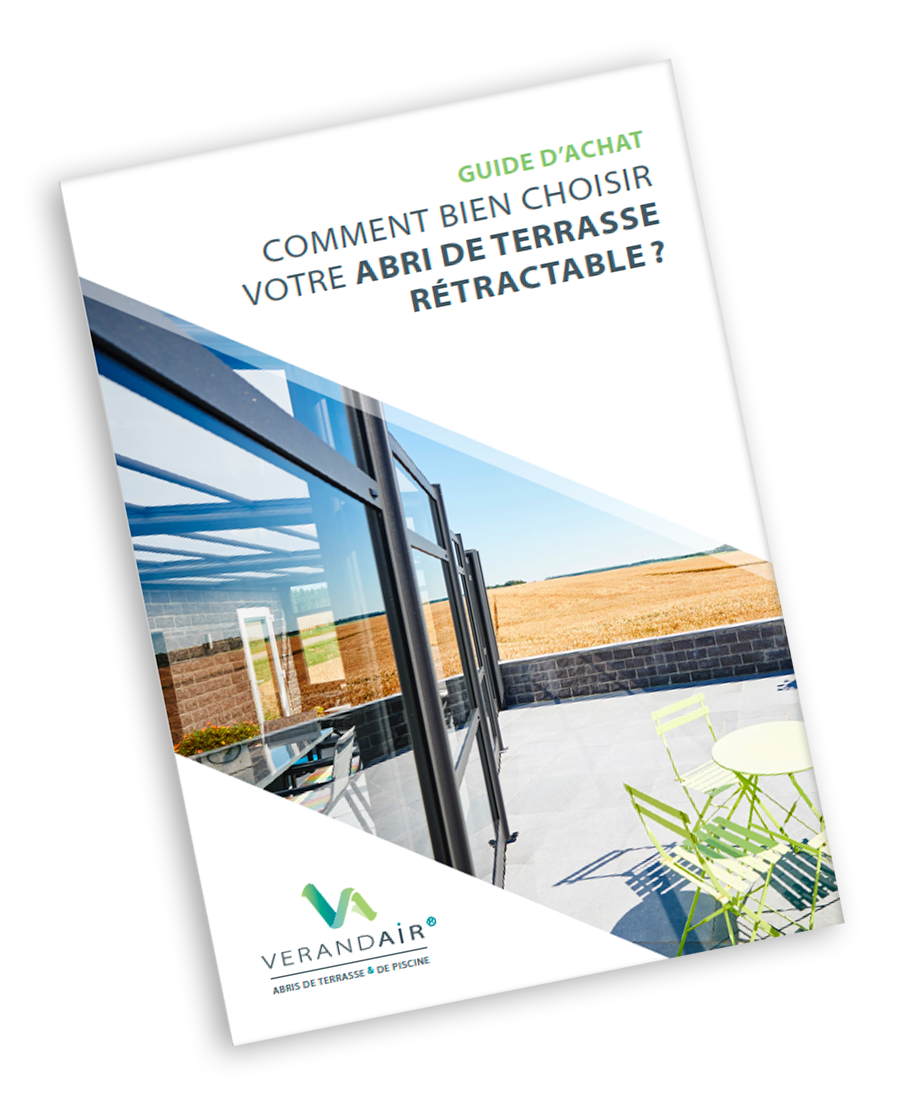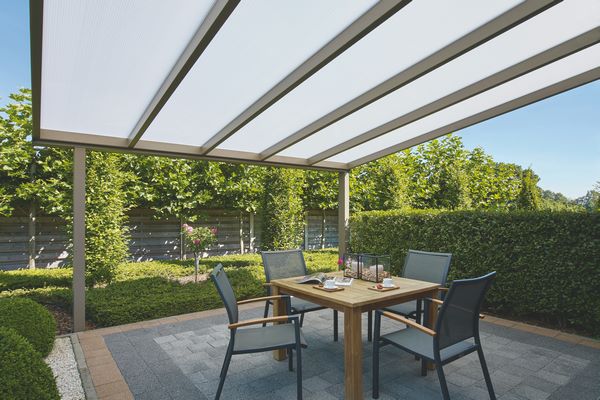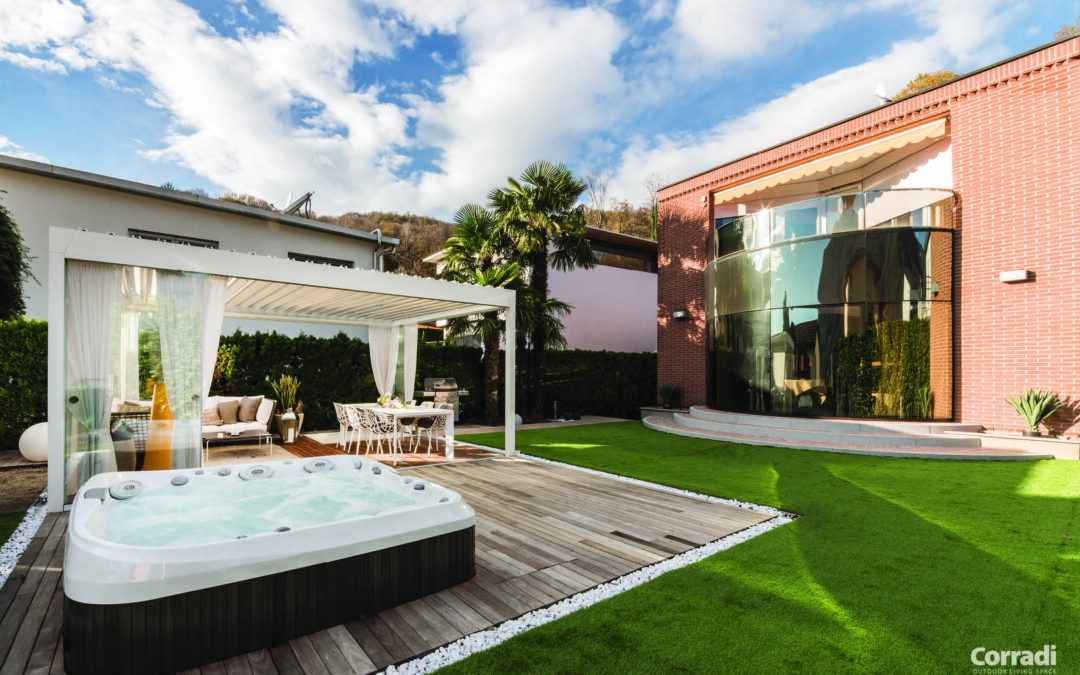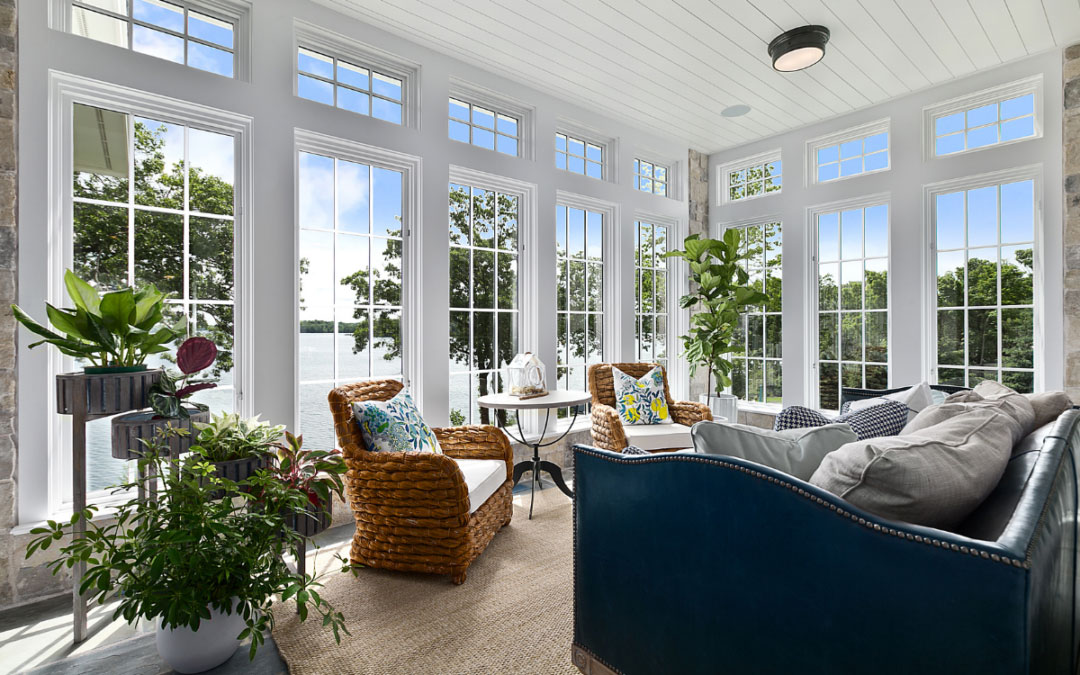The veranda is an increasingly popular living space in modern homes. It allows you to enjoy natural light while being protected from the elements, and also provides additional space in your home for relaxing or entertaining. However, for your veranda to be perfect, it’s important to choose the right roof. There are several roofing options available, each with its own advantages and disadvantages.
In this article, we offer a comprehensive guide to help you understand the different roofing options for a conservatory and help you choose the one that will best suit your project and budget.
Common materials for conservatory roofs
7 different materials are regularly used to build a veranda roof:
- Polycarbonate
- Plexiglas
- Aluminium
- The glass
- EPDM rubber
- Tiles or slates
- Sandwich panels.
Please note that these materials do not have the same properties, and will therefore not offer the same look on your veranda.
Conservatory roof prices by material
|
Material |
Price per square meter (in euros) |
|
Polycarbonate |
50-100 |
|
Plexiglas |
80-150 |
|
Aluminum |
100-200 |
|
Glass |
150-250 |
|
EPDM rubber |
50-100 |
|
Tiles or slates |
100-300 |
|
Sandwich panels |
70-150 |
It’s important to note that prices can vary depending on the size of the veranda, the type of profile used, the type of glazing and the complexity of the veranda structure. In addition, these prices do not include installation or labor costs.
In general, polycarbonate and EPDM rubber are the least expensive components, while glass and tiles/slates are the most expensive. Plexiglas and aluminum are in the middle price range, while sandwich panels are an economical and practical choice for a conservatory roof.
Let’s take a look at the characteristics of each material used to design a veranda roof:
1. Polycarbonate roofing
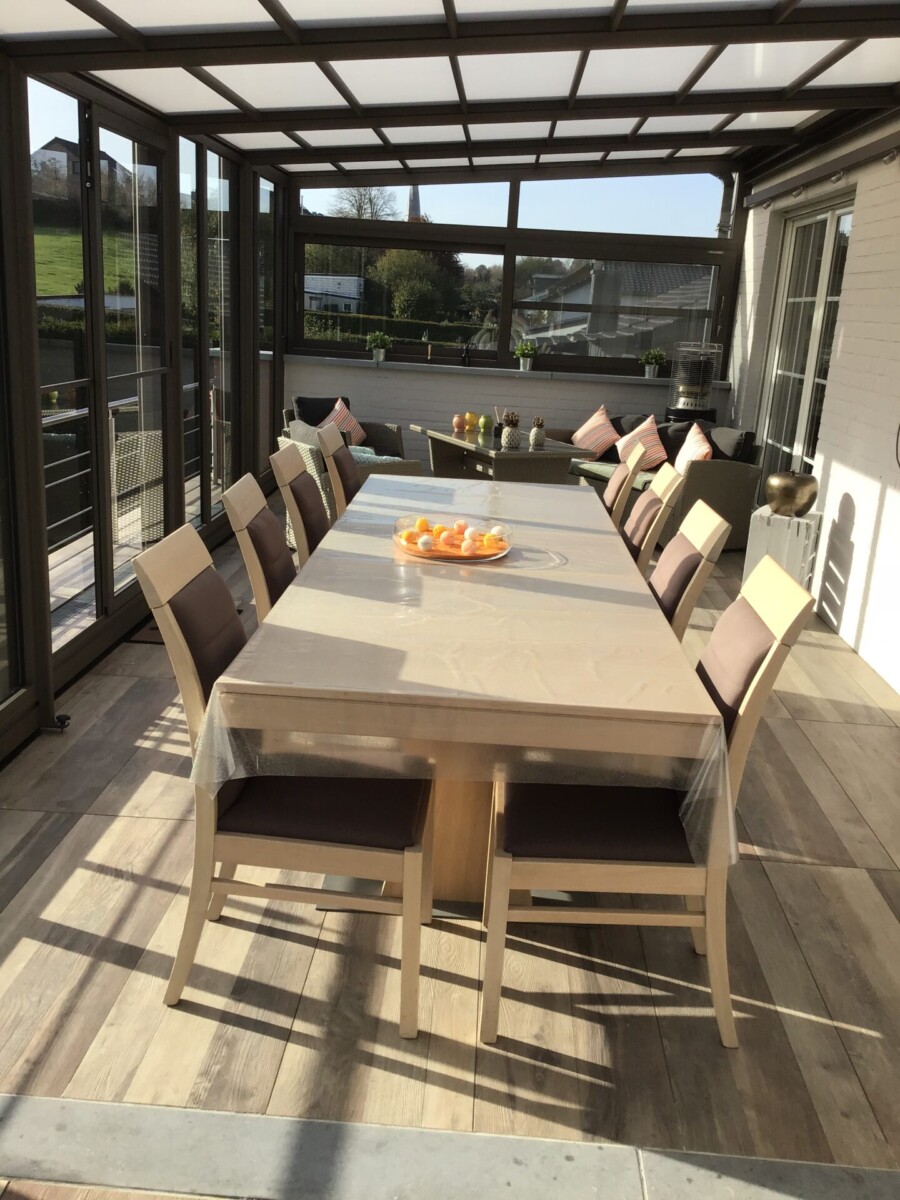
Polycarbonate (PC) is the hard, tough material par excellence. It’s a popular roofing material for patio sheds!
Advantages :
- It’s stable and lightweight.
- It is a good insulator because it has insulation chambers.
- Its high impact resistance makes it durable and suitable for outdoor use.
- It’s also easy to install and maintain.
Disadvantages :
- Polycarbonate is sensitive to UV rays, and can therefore deteriorate if left unprotected.
- It can also be damaged by storms or strong winds. It is therefore important to secure it properly to avoid damage.
- It may be subject to cracking in the event of heavy impact.
- It has a less aesthetic appearance than other resources such as glazing or slate.
If you opt for a polycarbonate conservatory roof, we advise you to choose white PC, as it offers better light protection and therefore greater visual comfort than transparent.
2. Plexiglas roof
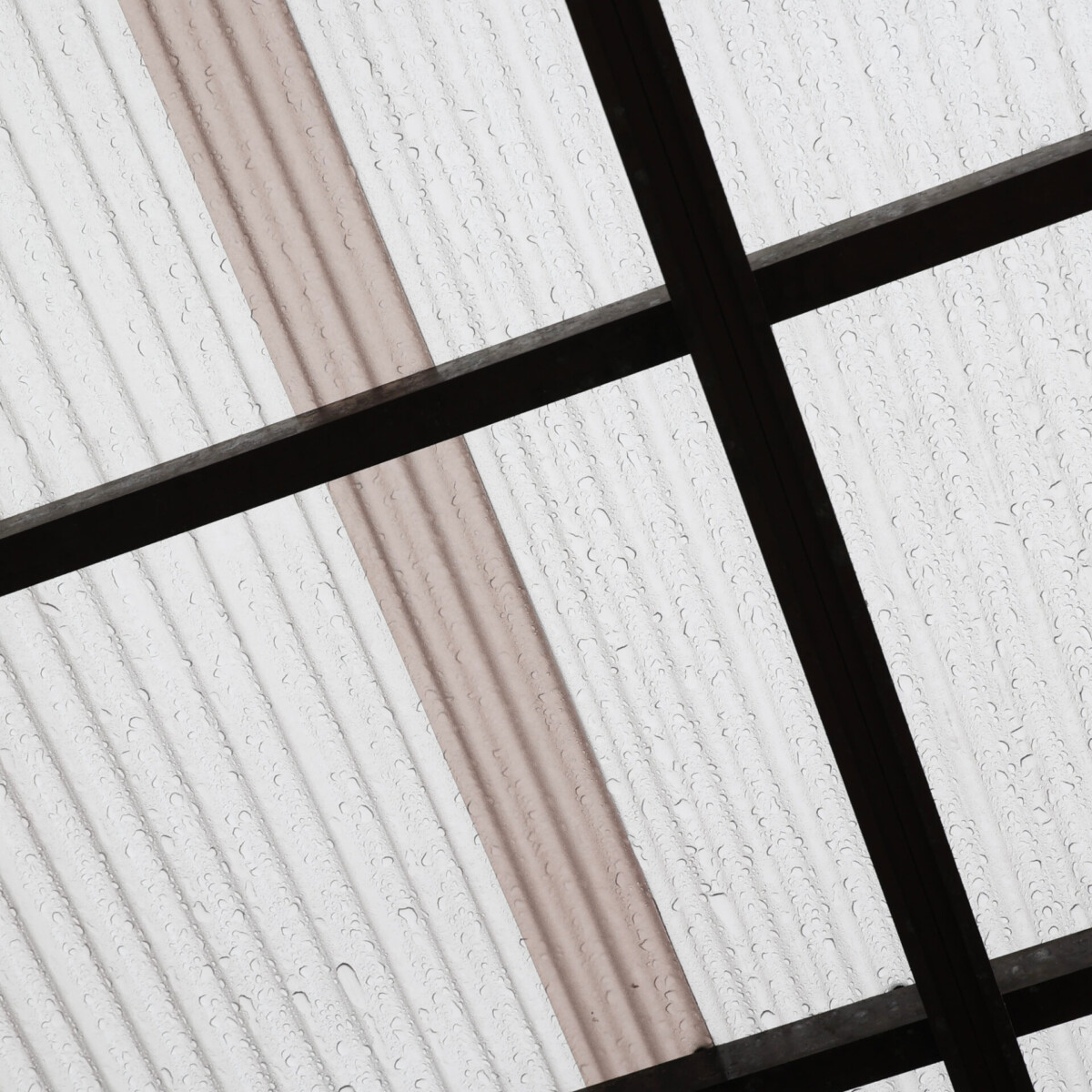
Plexiglas is an inexpensive resource, but of average quality. This material is preferable for lightweight structures that don’t have a very solid roof structure.
Advantages :
- Plexiglas is lightweight and easy to handle
- As a flexible material, it can therefore be easily cut and bent to suit a variety of roofs.
- It is impact and scratch resistant, and therefore weatherproof.
- It can withstand high temperatures without warping.
Disadvantages :
- Like polycarbonate, Plexiglas is also sensitive to UV rays.
- Its insulating qualities are not optimal
- It is more fragile than other roofing materials, such as tempered glass.
3. Aluminium roof
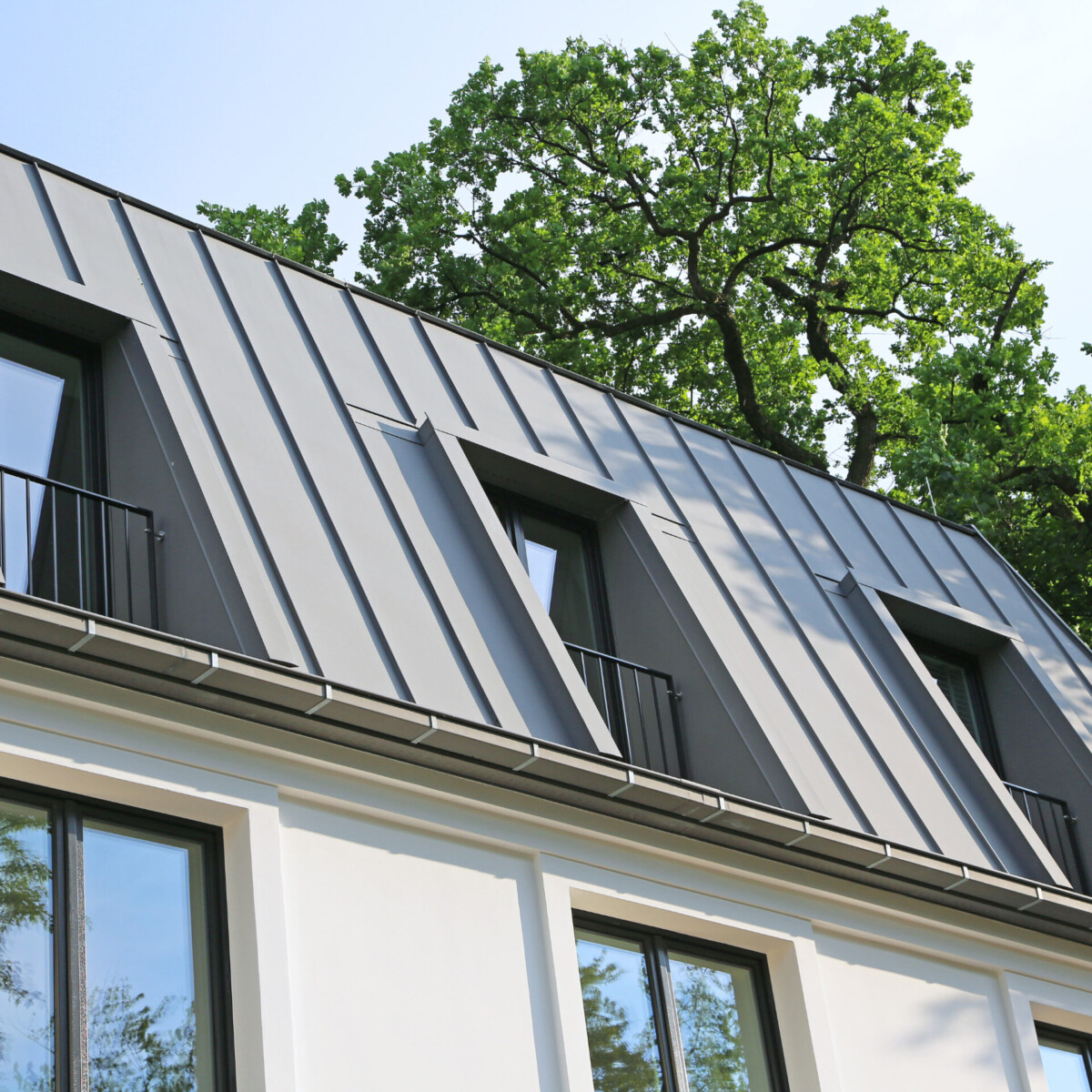
Aluminum is a light, strong metallic material used in a variety of applications, including veranda and pergola roofing.
It offers many advantages:
- Aluminum is ideal for outdoor use, as it resists rust, corrosion and fading. Properly maintained, it can last up to 50 years.
- Aluminum is lightweight, so it’s easy to handle and install, and doesn’t require as strong a support structure as other roofing materials.
- As a heat reflector, aluminum helps reduce energy costs. It regulates the temperature inside the room, making it warmer in winter and cooler in summer.
- In terms of design, aluminum is versatile and can be tinted in a wide range of colors. It can therefore be adapted to many different conservatory styles.
There are a few arguments against its use:
- It’s not the cheapest element. However, its cost is offset by its exceptional durability.
- A metal roof won’t cover the sound of rain. If this noise irritates you, it’s best to install a glass roof.
4. The glass roof
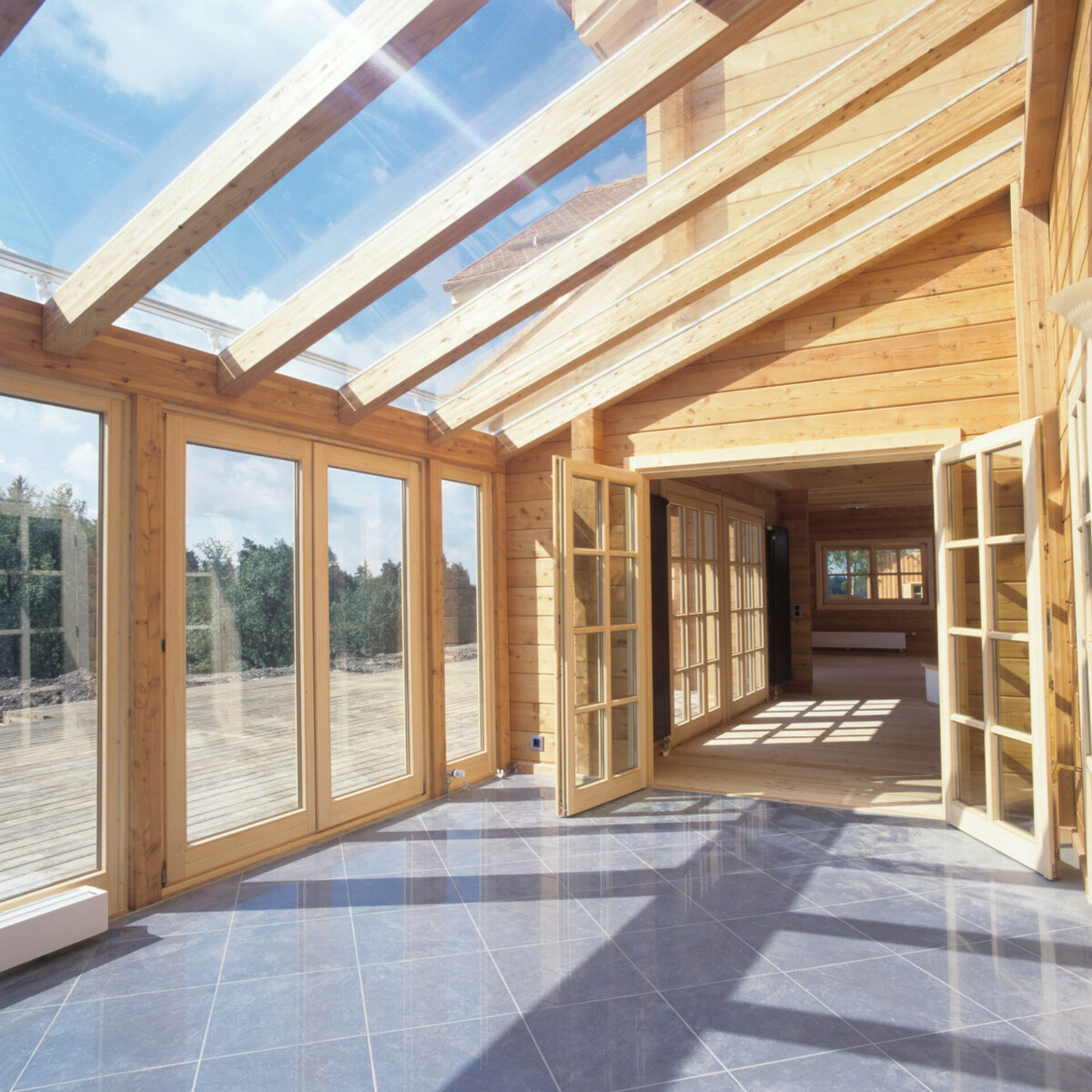
Advantages :
- Transparency: a glass roof lets in the sunlight, while offering an unobstructed view of the outside.
- Insulation: a glass roof can provide excellent thermal insulation, reducing energy costs in winter.
- Durability: glass is a strong, durable material that can withstand weather and impact.
- Aesthetics: a glass roof is very attractive and adds a modern, elegant style to a veranda.
Disadvantages
- Glass is more expensive than other roofing materials, such as polycarbonate or aluminum.
- Maintenance: glass roofs need regular cleaning.
- Risk of breakage: a glass roof can break in severe weather. It is therefore important to take safety precautions to avoid injury.
5. EPDM rubber
EPDM (Ethylene Propylene Diene Monomer) rubber is a synthetic rubber compound. It is used in particular for flat roofs and flat roofs, which require a high degree of waterproofing. It’s an ecological, economical and highly effective material for roofing patio sheds and garden sheds.
Advantages :
- EPDM rubber is resistant to ozone, weather, cold, sun and most chemicals, so it’s highly durable and can last for many years.
- As an elastic material, it adapts to roof movements and temperature variations, reducing the risk of cracks or tears.
- EPMD is also an excellent thermal and electrical insulator.
Disadvantages :
It’s important to note, however, that the cost of purchase and installation may be higher than for other roofing materials, but this can be offset by its long-term durability.
6. The tiled roof
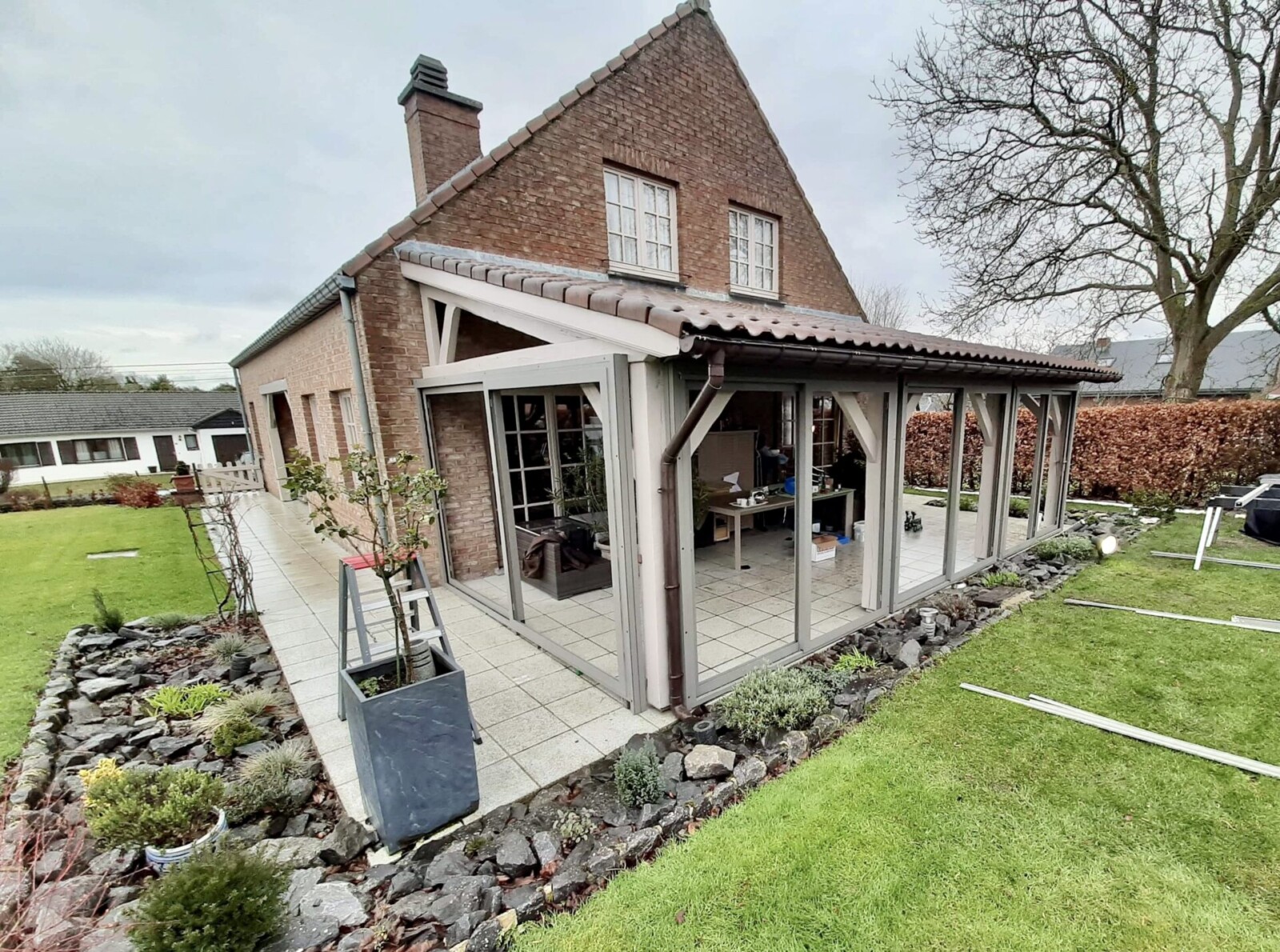
Tiles are the preferred roofing material in Belgium. Their resistance to weather conditions and long service life make them ideal for home roofing. For a veranda, you can also consider a tile or slate roof.
Advantages :
- Aesthetics: tiles and slates add a touch of rustic, traditional charm to your veranda.
- Durability: Tiles and slates are highly durable, weather-resistant elements that can last for many years without needing repair.
- Longevity: Tiles and slates have a long lifespan, lasting several decades if installed correctly.
- Thermal insulation: Tiles and slates can add thermal insulation to your veranda, which can help reduce your energy costs.
Disadvantages :
- A tiled roof will reduce the amount of light in the veranda, compared with other transparent materials such as Plexiglas or glass panes.
- Tiles are heavy, so the veranda structure must be strong enough to support them.
- Their installation requires a professional.
- This option may be more expensive than others.
7. Sandwich panels
Sandwich panels are composite panels consisting of two outer steel or aluminum sheets, joined by an insulating core of polyurethane, polystyrene or rock wool.
They are often used as terrace roofs because they offer several advantages:
- Good insulation: sandwich panels offer high levels of thermal insulation, helping you to cut your energy costs. Note, however, that insulation will depend on the thickness of the panel.
- Sandwich panels are weather-resistant, so they won’t rust, warp or discolor.
- Sandwich panels are fire-resistant materials, making them safe for buildings.
- Weight: the panels are lightweight, making them easy to install and reducing the load on the veranda structure.
- They require little maintenance and can be installed at low cost.
There are a few disadvantages:
- Sandwich panels may not offer the same level of aesthetic appeal as glass, tile or slate.
- If improperly installed or damaged, they can cause leaks in your veranda. They should therefore be installed by a professional.
- Sandwich panels have a limited lifespan, and can be damaged by extreme temperatures, UV rays, strong winds, snow, etc. It is therefore important to take into account the climatic conditions in your region.
In conclusion
This comprehensive guide has hopefully enlightened you on the many shelter roofing options available to you.
At Verandair, we’ve been building patio enclosures for homeowners and professionals for over 30 years, and our choice of materials is always solid and durable. They guarantee the quality and longevity of your investment.
As specialists in retractable verandas and bioclimatic pergolas, we prefer polycarbonate, which offers good value for money and allows the roof to slide. Our structures are made of aluminum, the most durable material available, offering you a wide range of customization options.
